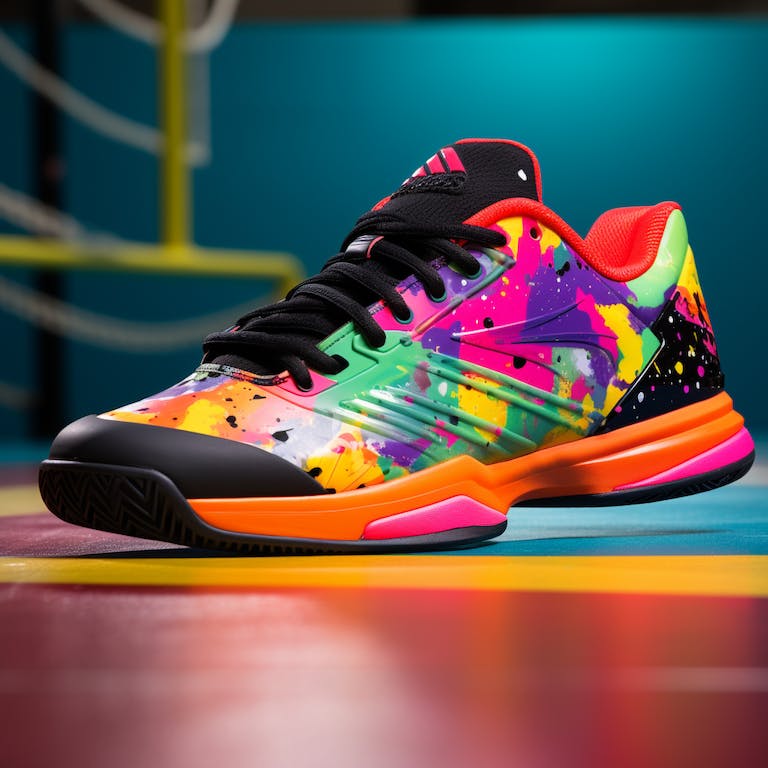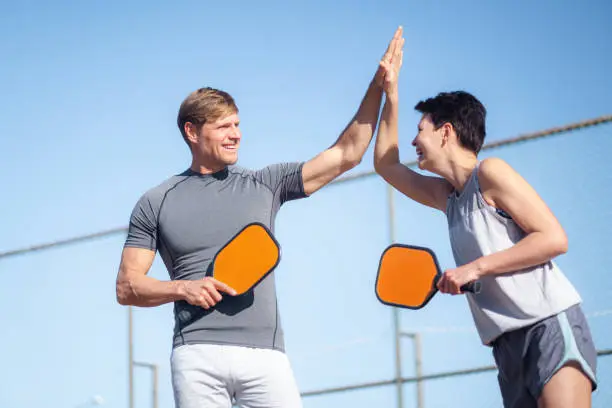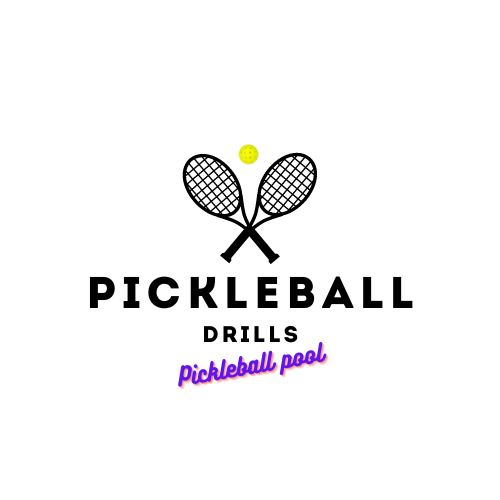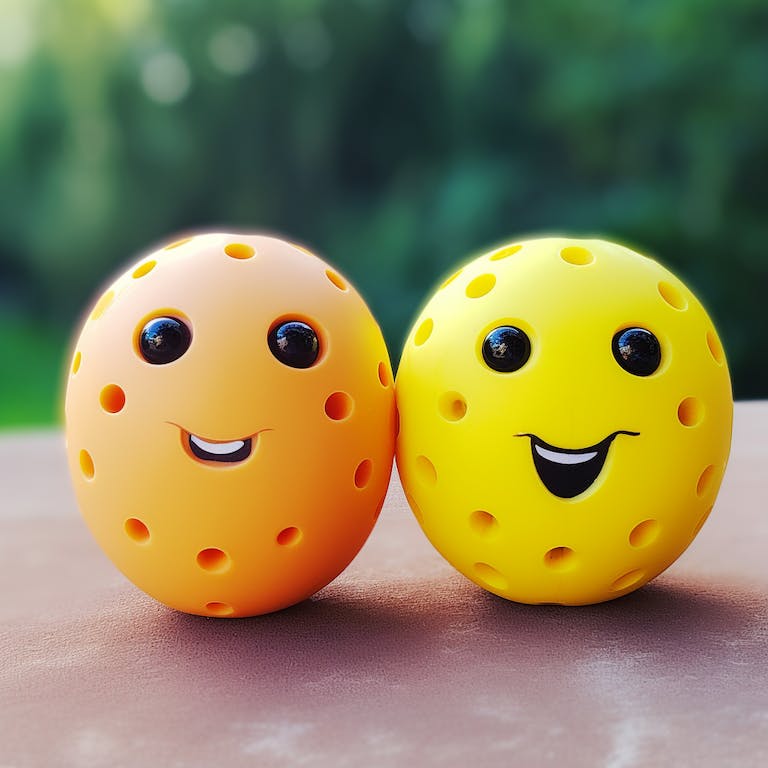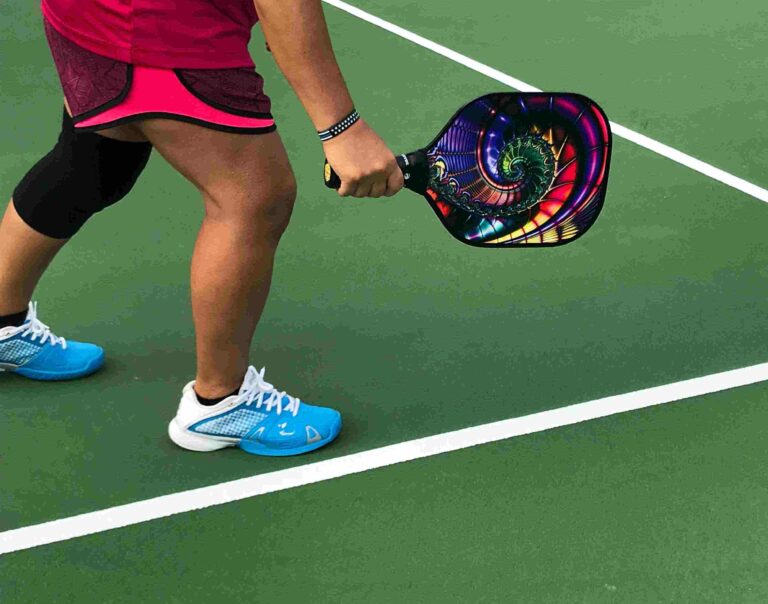Are pickleball shoes good for walking: The Comprehensive Guide to Pickleball Shoes for walking
Over the last decade, pickleball has exploded in popularity, becoming one of the fastest-growing sports in America. As participation in pickleball has surged, athletic shoe companies have responded by developing footwear specifically tailored to the sport. This has led to an influx of shoes marketed as “pickleball shoes” from major brands like New Balance, Adidas, Asics, and more.
These pickleball-specific shoes are designed to meet the demands of this unique paddle sport. The quick acceleration, sudden stops, and lateral motions involved in pickleball require shoes that are lightweight and stable.
Pickleball shoes typically have a close-fitting upper with lots of ventilation to keep feet cool and dry during competitive play. They also feature a thin, low-profile sole that hugs the contours of the court for optimal traction and maneuverability. Reinforcements in high abrasion areas enhance durability against the wear and tear of pickleballs.
However, there are key differences in the biomechanics of pickleball versus walking. Extended walking requires proper shock absorption, flexibility, and pronation control – areas where pickleball shoes may fall short since they prioritize lateral responsiveness and stability. Additionally, the grippy soles that provide bite on the pickleball court could actually hinder the natural heel-to-toe stride of walking.
This article will dive deeper into the pros and cons of using pickleball shoes for walking. We’ll analyze how the unique attributes of pickleball footwear could benefit or detriment walking comfort and performance.
By evaluating factors like materials, sole design, cushioning, and support, we’ll help you decide if pickleball shoes can double as walking shoes or if you’re better off with shoes designed strictly for walking.
Unique Attributes of Pickleball Shoes
Pickleball shoes have several specialized design elements that optimize them for the fast-paced play style of the sport.
Sole Design
The sole of a pickleball shoe is engineered to provide excellent traction on the court along with stability during quick multi-directional movements. The outsole uses a grippy rubber compound with a tread pattern tailored to allow fast acceleration and sudden stops. Compared to walking shoes, pickleball shoes have a much thinner and lower profile sole.
This keeps the foot close to the ground for better feel, control, and maneuverability. The minimal midsole drops heel-to-toe offset for quick reaction time. It also incorporates low-profile cushioning to absorb impact while still being responsive. Laterally stiff chassis plates in the midsole prevent rollover during hard cuts and pivots.
Materials
The upper of a pickleball shoe is constructed from very lightweight and breathable materials to prevent overheating and perspiration during active play. Mesh panels and perforations allow airflow across the top of the foot.
Synthetic leather or TPU overlays provide structure and durability. Internal booties feature moisture-wicking linings to keep feet dry. Abrasion-resistant materials are used in high-wear areas such as the toe bumper. The materials are pliable to allow free natural motion of the foot.
Toe Shape
Pickleball shoes have a slightly squared-off toe area rather than a tapered or rounded walking shoe toe shape. This provides a bit of extra room for the foot during active toe-offs when changing direction.
The toe spring (space between the ball of the foot and the ground) is also much lower than walking shoes. This places the foot closer to the ground for stability and maximizes court feel. The toe reinforcement protects during jam stops and drag toes are used to stay in position for a shot.
Potential Benefits of Wearing Pickleball Shoes for Walking
While designed for the court, some attributes of pickleball shoes may actually be advantageous for walking as well.
Traction
The outsole of a pickleball shoe uses a sticky rubber compound to prevent slipping during quick movements. This grippiness can also be beneficial when walking on uneven outdoor terrain like dirt trails, gravel paths, or hilly sidewalks. The enhanced traction keeps your footing stable over variable surfaces.
Cushioning
Although prioritizing responsiveness over plush cushioning, many pickleball shoes incorporate quality foam in the midsole to absorb impact. Strategically placed around the heel and forefoot, this cushioning offers shock absorption to make long walks comfortable. The collar lining of pickleball shoes also utilizes ample padding to prevent blisters and hotspots during long wear.
Support
Due to the lateral demands of pickleball, most shoes are equipped with supportive features to stabilize the foot. This includes arch support, contoured footbeds, and structured heel counters. For overpronators, options with medial posts aid stability. When walking long distances, these elements enhance comfort by reducing fatigue.
Lightweight
To avoid weighing down the feet, pickleball shoes minimize bulk in materials. The lightweight makeup reduces overall mass, which can prevent walking exertion and make covering long distances feel less fatiguing. The minimal feel allows a natural stride rather than clunky walking shoes.
Drawbacks of Pickleball Shoes for Walkers
While pickleball shoes shine on the court, they have some shortcomings that could hinder their walking comfort and performance.
Stiff Sole
To prevent rolling an ankle during quick cuts, pickleball shoes have a stiff sole that resists twisting. However, this reduces the natural flexibility of the walking gait, potentially causing discomfort. It inhibits the foot’s ability to smoothly roll through each step.
Lack of Pronation Control
Many walking shoes actively control overpronation and supination with angled wedge geometries or reinforced arches. Pickleball shoes lack these stabilization features. For moderate to severe overpronators, this can lead to knee, hip and back pain during lengthy walks.
Less Shock Absorption
The thin soles and low profile cushioning of pickleball shoes provide enough protection for short bursts of activity. But hardcore walkers need thicker, ultra-cushioned midsoles to soften constant pavement pounding. Pickleball shoes lack the plush cushioning needed for all-day comfort.
Excessive Traction
While beneficial on the court, the extremely grippy soles of pickleball shoes can actually disrupt the natural walking gait. The sticky rubber inhibits the smooth heel-to-toe roll through each step. The fixed traction can also lead to knee or metatarsal pain.
Pickleball vs. Walking Shoes
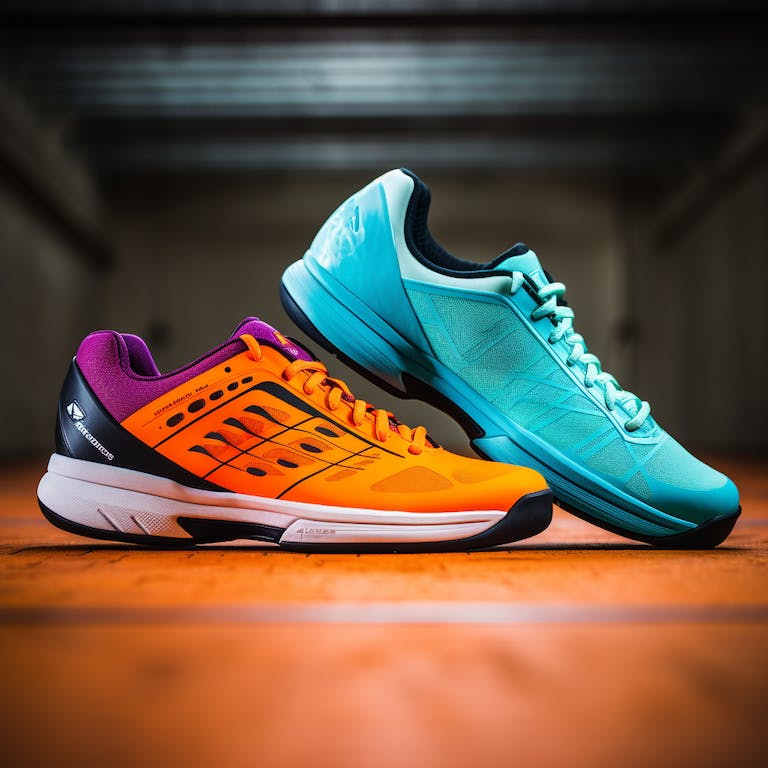
When evaluating pickleball shoes for walking, it’s important to understand the key differences in design and mechanics between the two activities.
Traction Patterns
Pickleball requires a grip for sudden stops. Walking uses a smoother tread that glides cleanly through each step.
Sole Structure
Pickleball shoes have thin, flat soles for quickness. Walking shoes have thick, contoured soles for cushioning.
Weight Distribution
Pickleball shoes are lightly cushioned and minimal. Walking shoes have heavy cushioning and motion control features.
Can you wear running shoes for pickleball?
Yes, you can use running shoes while playing pickleball, but they are not ideal. The primary reason they aren’t the best choice is that they lack the design specificity of a tennis shoe, especially when it comes to lateral movements. Running shoes are predominantly constructed for forward movement, while pickleball, similar to badminton, requires a mix of side-to-side and forward-backward moves.
Therefore, a good tennis shoe can provide better ankle support and stability that a pickleball player needs. Despite running shoes being a potential option, investing in a pair of sports shoes designed for games like pickleball, tennis, and badminton is a smarter choice.
You may like: Can Pickleball Shoes be Used for Other Sports
Do I need special shoes for pickleball?
While it’s possible to play pickleball in any athletic shoes, the best pickleball experience is achieved using shoes designed specifically for court sports. These shoes provide the necessary support and traction needed on a tennis court surface where pickleball is typically played.
Brands like K-Swiss and Skechers have released pickleball-specific shoes such as the K-Swiss Express Light Pickleball and various Skechers models optimized for court performance. These shoes feature enhanced stability, lateral support, and special soles to aid quick movements and sudden stops, commonly required in a fast-paced game like pickleball.
Therefore, although not a mandatory requirement, special shoes can significantly improve your pickleball game.
Key Factors in Choosing the Right Pickleball Shoes for Walking
Deciding if pickleball shoes can work for walking depends on several individual factors. Consider these elements when evaluating pickleball shoes for walking purposes.
Walking Surfaces
- Smooth, even paved surfaces allow for more versatility in footwear.
- Rough or uneven terrain-like trails may benefit from the traction of pickleball shoes.
Distance
- Short 20-30 minute strolls are easily manageable in pickleball shoes.
- Long distances or all-day wear require maximum cushioning found in walking shoes.
Foot Type
- Those with high arches fare better in the structured support of pickleball shoes.
- Overpronators require motion control features found in traditional walking shoes.
Fit
- Try on pickleball shoes and walk around the store to assess walking comfort and support.
- Consider sizing up for a roomier walking fit.
Weight
While pickleball shoes are lightweight, ensure adequate cushioning is not sacrificed. Lightweight comfort can aid walking, but shock absorption is crucial.
Arch Support
Analyze the arch height of the contoured footbed. Proper arch support reduces fatigue over long distances.
You may like: 7 best women’s pickleball shoes for Wide Feet
Transitioning between Walking and Pickleball
For active folks alternating activities, utilize pickleball shoes for court play and walking shoes for extended walks to enjoy the optimized features of each.
When breaking in pickleball shoes for walking, do so gradually to allow adaptation without injury. Listen to any foot pain signals. Transition seamlessly by keeping the variable demands of each activity in mind.
Frequently Asked Questions
How does the traction of pickleball shoes compare to walking shoes?
Pickleball shoes have more grippy traction to allow quick stops and direction changes on the court. Walking shoes have smoother tread patterns that provide fluid heel-to-toe transitions.
Do the lightweight materials of pickleball shoes make them good for walking?
The lightweight mesh can aid in walking comfort over long distances. However, the minimal cushioning compared to walking shoes can cause foot pain during lengthy walks.
What foot pain or injuries are associated with using pickleball shoes for walking?
Plantar fasciitis, shin splints, knee, and back pain can result from the lack of shock absorption, especially on hard surfaces.
How can you gauge proper arch support when trying pickleball shoes for walking?
Notice if your arch collapses significantly lower in pickleball versus walking shoes. Improper support leads to fatigue.
Are pickleball shoes better suited for indoor or outdoor walking?
Outdoor – the durable grip is ideal for variable terrain. Indoor – lack of cushioning causes fatigue on hard surfaces.
Should you wear pickleball shoes for power walking or speed walking?
No – the rigid sole and lack of padding cannot withstand the high-intensity impact of power/speed walking.
How do you clean pickleball shoes after walking?
Use a soft brush and mild soap to clean the upper. Avoid submerging. Air dry. Replace insoles periodically.
How often should you replace pickleball shoes used for walking?
About every 300-500 miles since constant walking breaks down cushioning faster than intermittent pickleball play.
Can pickleball shoes complement or replace athletic shoes for walking?
They can complement casual walking, but generally should not fully replace athletic shoes except for light walkers.
Are there modifications to make pickleball shoes better for walking?
Supportive aftermarket insoles can help, but modifying the sole is difficult. Choose shoes with adequate cushioning.
Are pickleball shoes suitable for daily use?
Yes for short active errands. But all-day wear requires maximum cushioning lacking in most pickleball shoes.
Can I use walking shoes for pickleball?
Not ideal. Walking shoes lack stability for quick lateral motions needed in pickleball due to their thick sole.
How often should I replace pickleball shoes?
About every 100 hours of playtime as cushioning breaks down. More often if used for walking.
Do pickleball shoes come in wide widths?
Some brands offer wide sizes, but selection is more limited than walking shoes. Check with athletic brands like New Balance.
Are lightweight pickleball shoes suitable for walking?
Yes for casual walking if properly fitted. Monitor for foot soreness and slowly break them in to acclimate.

